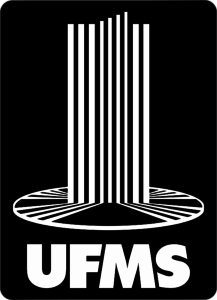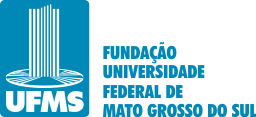Use este identificador para citar ou linkar para este item:
https://repositorio.ufms.br/handle/123456789/1655| Tipo: | Dissertação |
| Título: | Introdução ao vocabulário da língua Ofayé: uma amostra de substântivos |
| Título(s) alternativo(s): | Considerations Ofayé language nouns |
| Autor(es): | Cruz, Lorena Adami da |
| Primeiro orientador: | Ferreira, Vitória Regina Spanghero |
| Resumo: | Este trabalho consiste em um estudo introdutório do léxico da língua ofayé, da família linguística macro-jê, cujo objetivo específico é agrupar substantivos ofayé com o intuito de trabalhar concepções sobre vocabulário, dicionário e glossário, campo semântico, dicionário bilíngue, neologismo e onomatopéia, sendo que todos esses conceitos são objetos teóricos do trabalho aplicado em dados ofayé. Partimos da perspectiva segundo a qual o léxico abriga as representações coletivas do real e as concepções de um povo (BIDERMAN, 2001) e esse povo é o sujeito ativo no processo de transformação no sistema linguístico, seja na emergência de novos itens lexicais, seja na transformação de outros, promovendo o enriquecimento do léxico. Para cumprir os objetivos propostos e na esteira dos estudos lexicográficos e lexicológicos, utilizamos como base teórica, Zgusta (1971), para tratar do léxico; Biderman (2001), para discutir sobre campos semânticos e neologismo, Dapena (2002), para abordar a diferença entre lexicografia e semântica, lexicografia e gramática; Welker (2004), por sua teoria sobre dicionários bilíngues e pela definição de lexicologia e lexicografia; e Alves (2007) para discorrer sobre neologismo. A pesquisa de Oliveira (2006) ofereceu suporte para as considerações de ordem morfológica e sintática do ofayé, bem como uma lista de palavras, usadas para a organização do vocabulário de substantivos aqui proposto. A dissertação está organizada em seis capítulos. No primeiro, discorremos sobre as línguas indígenas em geral, focalizando o risco de extinção a que muitas estão sujeitas, inclusive o ofayé, e sobre o povo e sua cultura. No segundo, são apresentadas concepções básicas de léxico e língua, no terceiro, distintos conceitos e princípios pertinentes à obra lexicográfica, a saber: lexicologia e semântica, lexicografia e gramática, macroestrutura e microestrutura. Alguns aspectos fonológicos e morfológicos da gramática ofayé são apresentados no quarto capítulo. Precedido por informações sobre a língua no que se referente ao campo semântico, neologismo e onomatopéia e em seguida, o vocabulário ofayé-português constituem o quinto e último capítulo deste trabalho. |
| Abstract: | This work consists of an introductory study of the lexicon of the language ofayé, the macro-Ge linguistic family, whose specific objective is to group nouns ofayé in order to work on vocabulary concepts, glossary and dictionary, semantic field, bilingual dictionary, neologism and onomatopoeia, and all these concepts are theoretical objects of applied work on data ofayé. We adopt the view that the lexicon is home to the collective representations of reality and notions of a people (Biderman, 2001) and this people is the active subject in the transformation process in the linguistic system, is the emergence of new lexical items, whether in transformation of others, promoting the enrichment of the lexicon. To meet the objectives proposed in the wake of studies and lexicographical and lexicological, used as a theoretical basis, Zgusta (1971), to treat the lexicon; Biderman (2001), to discuss and semantic neologism, Dapena (2002), to address the difference between semantics and lexicography, grammar and lexicography, Welker (2004), for his theory of bilingual dictionaries and the definition of lexicology and lexicography, and Ahmed (2007) to discuss neologism. The research of Oliver (2006) provided support to the considerations of morphological and syntactic ofayé as well as a list of words used to organize the vocabulary of nouns proposed here. It is organized into six chapters. At first, we consider the indigenous languages in general, focusing on the risk of extinction in many subject, including ofayé, and on the people and their culture. In the second, the concepts presented are basic vocabulary and language in the third, different concepts and principles relevant to the lexicographic work, namely: lexicology and semantics, lexicography, grammar, macrostructure and microstructure. Some aspects of phonological and morphological grammar ofayé are presented in the fourth chapter. Preceded by information about language as referring to semantic field, neologisms, and onomatopoeia and then ofayé-Portuguese vocabulary are the fifth and final chapter of this work. |
| Palavras-chave: | Léxico Língua Ofayé Substantivos Campos Semânticos Neologismo Onomatopeia Dicionário Bilíngue |
| Tipo de acesso: | Acesso Aberto |
| URI: | https://repositorio.ufms.br/handle/123456789/1655 |
| Data do documento: | 2011 |
| Aparece nas coleções: | CPTL - Programa de Pós-Graduação em Letras (PPGLetras) Programa de Pós-graduação em Letras (Campus de Três Lagoas) |
Arquivos associados a este item:
| Arquivo | Descrição | Tamanho | Formato | |
|---|---|---|---|---|
| Dissertação_Lorena.pdf | 917,92 kB | Adobe PDF | Visualizar/Abrir |
Os itens no repositório estão protegidos por copyright, com todos os direitos reservados, salvo quando é indicado o contrário.

